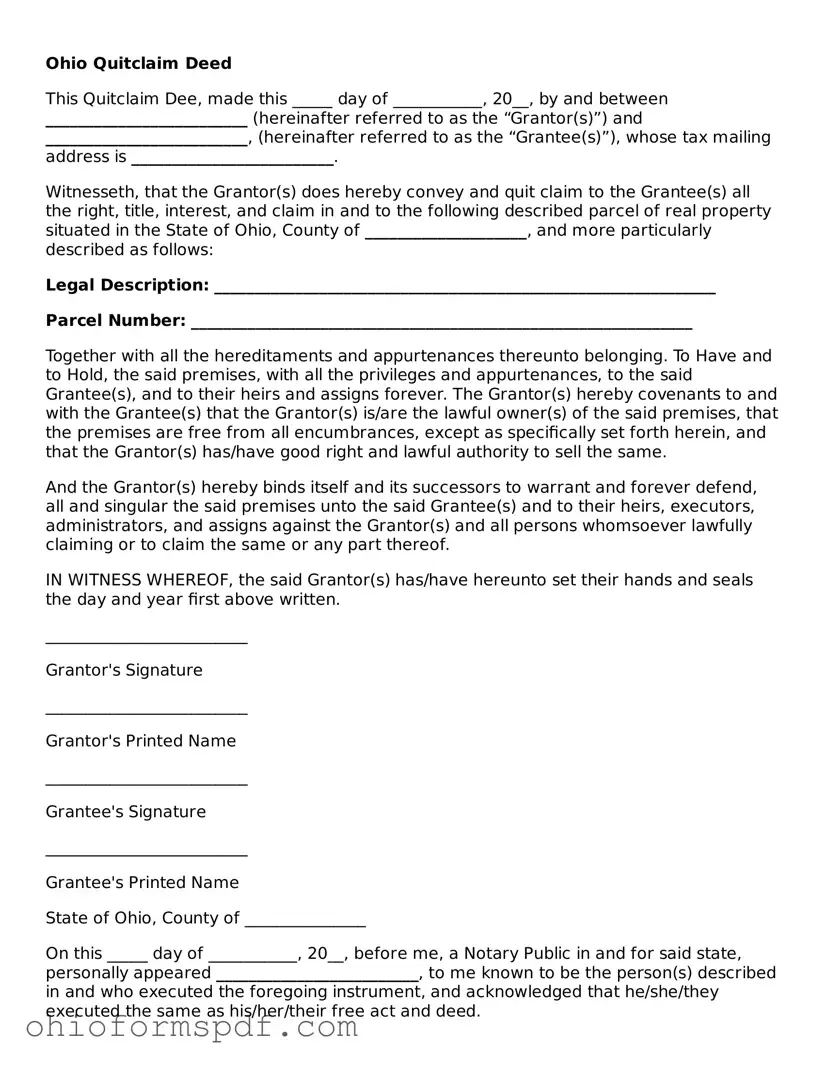Ohio Quitclaim Deed
This Quitclaim Dee, made this _____ day of ___________, 20__, by and between _________________________ (hereinafter referred to as the “Grantor(s)”) and _________________________, (hereinafter referred to as the “Grantee(s)”),
whose tax mailing address is _________________________.
Witnesseth, that the Grantor(s) does hereby convey and quit claim to the Grantee(s) all the right, title, interest, and claim in and to the following described parcel of real property situated in the State of Ohio, County of ____________________, and more particularly described as follows:
Legal Description: ______________________________________________________________
Parcel Number: ______________________________________________________________
Together with all the hereditaments and appurtenances thereunto belonging. To Have and to Hold, the said premises, with all the privileges and appurtenances, to the said Grantee(s), and to their heirs and assigns forever. The Grantor(s) hereby covenants to and with the Grantee(s) that the Grantor(s) is/are the lawful owner(s) of the said premises, that the premises are free from all encumbrances, except as specifically set forth herein, and that the Grantor(s) has/have good right and lawful authority to sell the same.
And the Grantor(s) hereby binds itself and its successors to warrant and forever defend, all and singular the said premises unto the said Grantee(s) and to their heirs, executors, administrators, and assigns against the Grantor(s) and all persons whomsoever lawfully claiming or to claim the same or any part thereof.
IN WITNESS WHEREOF, the said Grantor(s) has/have hereunto set their hands and seals the day and year first above written.
_________________________
Grantor's Signature
_________________________
Grantor's Printed Name
_________________________
Grantee's Signature
_________________________
Grantee's Printed Name
State of Ohio, County of _______________
On this _____ day of ___________, 20__, before me, a Notary Public in and for said state, personally appeared _________________________, to me known to be the person(s) described in and who executed the foregoing instrument, and acknowledged that he/she/they executed the same as his/her/their free act and deed.
IN TESTIMONY WHEREOF, I have hereunto set my hand and official seal.
_________________________
(Notary Seal)
Notary Public
My Commission Expires: _______________
